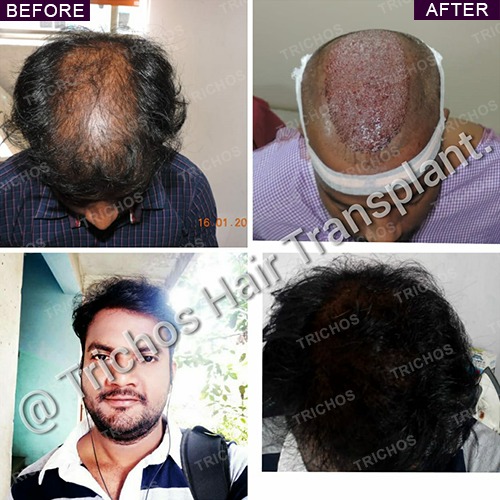Does Shirshasana Yoga promotes hair growth?
Different questions are being raised by fans and followers of Dr John Watts are flooding his series of hugely popular educational videos with queries related to hair transplants and hair growth issues.
In this educational video, noted dermatologist & trichologist and one of the Best Hair Transplant Surgeons in Hyderabad Dr John Watts answers select shortlisted questions of viewers related to hair growth, hair hall and hair transplant.
Bunny Sujith asks: “Many a time, I forget to use Minoxidil due to several reasons. I wanted to know for how many days we can skip using it without causing any loss of hair?
This is a regular problem faced by many. Our work and forgetfulness make us skip using Minoxidil. Sometimes patients misplace the bottle. However, Dr John Watts insists that patients must make it a point to use the Minoxidil solution without fail and with any time gap. “Even if one skips using it for 7-10 days a stretch, the results would be drastically reduced,” he warned.
Unique asks: “Post hair transplant procedure for how many days we are supposed to cover the hair with a cap?
In his response, Dr John Watts tells Unique that they generally ask the patient to wear a protective cap for 5-10 days after the transplant procedure. “You can extend it to one month or if you like and okay, you can wear a cap whenever you are travelling to a dusty place as a precaution,” he clarified.
Anonymous asks: “I have learnt that doing Yoga asanas, especially Shirshasana would increase blood supply to the upper region of the head/scalp and control hair loss and promote hair growth. I want to know if it can also help DHT-influenced regions to grow hair?
In his response, Dr John Watts acknowledges the beneficial role Shirshasana can play to improve and increase the blood supply to the scalp and promote hair growth. However, he said that the DHT influenced region would remain immune to any positive changes with Shirshasana. “There won’t be any hair growth in DHT influenced bald region of the scalp as it cannot act as a DHT blocker,” he explained.
Sheikh Basha asks: “I underwent two hair transplant procedures within a two-month gap. Is there a possibility that the hair grafts of my first hair transplant procedure might have overlapped with my second hair transplant hair grafts? Can it possibly lead to damage or will a second hair transplant procedure too soon increase hair density?
In his response, Dr John Watts tells Sheikh Basha that it was a mistake to go for two back to back hair transplant procedures too soon without enough time gap. “The ideal time to go for a second hair transplant procedure is after a wait of 6 months minimum time and not before that,” he tells Basha.
This is because, after the initial healing process of 15-20 days required after the first hair transplant procedure, the transplanted hair needs 9-12 months to fully grow. This is when and how we can surely know where the grafts of the first hair transplant procedure were implanted.
“But since you have opted for a second hair transplant procedure immediately, there is no way to find out where the hair grafts of the first hair transplant procedure were implanted. Hence, increasing hair density with the second procedure as quickly done like in this case is unlikely,” he informed.
Trichos provides state-of-the-art treatment for various hair loss conditions and offers advanced hair transplant solutions. Call us Today for a Life-Changing Experience.
Book an appointment for expert guidance


About
Causes
Alopecia
Restoration
Procedures
Locations
Disclaimer: While hair transplants are generally safe and effective, as with any medical procedure, there can be minimal and temporary side effects based on specific or underlying medical condition of the individual patient. Please consult in person with our qualified medical team at Trichos for a thorough assessment of your specific condition and individualized guidance on the potential risks and benefits associated with our hair restoration treatments.
Learn more about Medical Consent for Surgeries.



